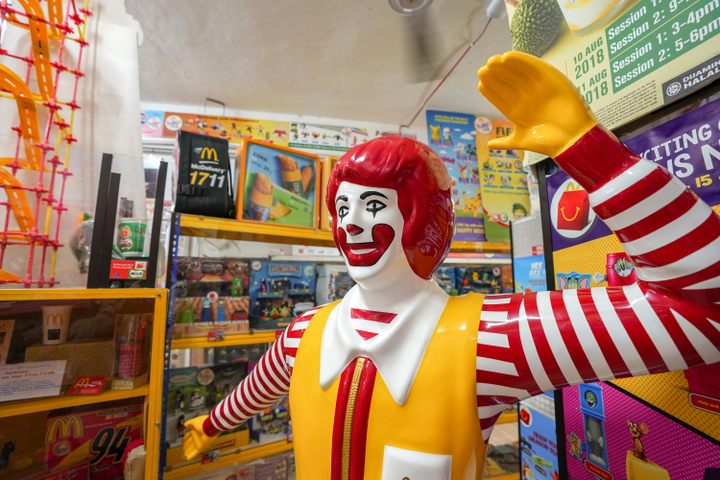

Inside the Malaysian Museum Devoted to McDonald’s Toys
Lee Choon Chiek has spent four decades collecting 70,000 toys, Happy Meal boxes, Grimace costumes, and more.
Tucked among eateries, auto shops, and pet stores in Alor Setar, the capital city of the northern Malaysian state of Kedah, is a storefront with a sign that reads Top Fast-Food Toy Collections. Often mistaken for a toy store, it is actually a private museum displaying more than 70,000 toys and other assorted memorabilia from McDonald’s, all of which Lee Choon Chiek has collected over four decades. If you are lucky enough to drop by on a day when Lee happens to be free, he might come down from his apartment upstairs to give you a personal tour of his treasures, from the four Ronald McDonald statues to the plethora of Happy Meal toys from notable Disney movies to the set of Snoopy World Tour figurines that had kids eagerly awaiting their release back in 1999.
Lee was introduced to the world of collecting in 1978, at the age of 17. “Shortly after finishing secondary school, I had a circle of friends who constantly talked about things they liked to collect, from sports memorabilia to matchstick boxes,” Lee recalls. “I found it all very fascinating.”
Just a few years later, in 1982, Lee attended the opening ceremony of Malaysia’s first McDonald’s in Kuala Lumpur, where he received a red-and-yellow metal pencil holder that came with the chicken burger he bought (that pencil holder, now with some rust stains, can be seen in Lee’s museum). Inspired by that event, Lee decided to try his hand at collecting.

At that time, international fast-food franchises were just making their way into Malaysia. When Lee started collecting, the only chain with an outlet in the small city of Alor Setar was KFC. Lee built on his collection with a few pieces of KFC-themed merchandise. “But there wasn’t much else I could get,” he recounts.
Then, in 1990, McDonald’s came to Alor Setar. For Lee, it was the start of a lifelong obsession. Lee isn’t even that fond of fast-food; he just sees something special in the toys.
“The toys we get here are different from the ones over in America,” he says. “In McDonald’s [stores] across Asia, the toys are available at much more limited quantities, and they tend to sell out quickly.” Plus, Lee explains, since Asia is more culturally diverse, there’s more variety and regionally unique items. One notable example is the 1999 Hello Kitty wedding series that featured six pairs of Hello Kitty and Dear Daniel plushies in different wedding outfits, including pairs in traditional Chinese and Malay wedding attire.

Lee shares that acquiring fast-food trinkets has not been the same since then. “You used to be allowed to just buy the toys in McDonald’s, until these popular Hello Kitty plush sets came out in 1999. From then on, you could only get the toys with the purchase of food.”
In the years that followed, every corner of Lee’s home would get filled with boxes upon boxes of Happy Meal toys, not just from the local McDonald’s, but also those abroad. “I started buying a few toys here and there, but the more I got into it, eventually I began searching for the toys to complete every set. It’s an addiction for me,” Lee says.
For Lee, part of the joy of collecting is in the hunt. But even in this age of the internet and social media where it’s easy to find one’s tribe online, Lee prefers networking the old-fashioned way. Over the years, word of mouth about his hobby has reached friends, extended family, and acquaintances who have offered to help him acquire missing items. Not much of a traveler himself, Lee relies on this network to get his hands on some rare and exclusive finds.

“Often, I will get messages from friends and relatives who are traveling or living abroad, sending me snapshots of the latest toys in the region, and offering to buy them for me,” says Lee. He shows off a limited-edition mahjong set from a McDonald’s in China as an example. “There’s only 2,000 of these and my sister stood in a long queue to get one for me during her vacation.”
Lee’s collecting has since extended beyond toys to other memorabilia from the Golden Arches and its frequent collaborator, Coca-Cola. Among his treasures, Lee has the world’s first Happy Meal box introduced in 1979 and its little rubber figurines depicting aliens; a uniform and an unused paper cap from the first McDonald’s restaurant in the U.S.; uniforms from the first McDonald’s in Malaysia; unused food packages; and mascot costumes for familiar characters like a big, purple Grimace and the Hamburglar. He even has a collection of various McDonald’s condiments from around the world, including the many hot and spicy sauces available only around Asian outlets—like garlic chili sauce, sambal, and seaweed seasoning—some dating back to the 1980s.

No one knows Lee’s obsession like his son and only child, Jian Wen. “I grew up around these toys,” Jian Wen says. Now a parent himself, he has since joined in his father’s hobby. “I’ve caught the collecting bug myself,” he adds with a smile.
These days, the younger Lee now acts as the mediator with anyone wishing to add to his father’s collection. “Some items, like the Ronald McDonald statues, are company property and there was paperwork to be done to properly transfer ownership to us. That’s where I come in,” he explains.
It was Jian Wen’s idea that Lee convert the ground floor of their space into a showroom for his ever-expanding collection in 2021. Both father and son show no signs of slowing down, and there are still around 40,000 items in storage due to space confines and being incomplete. “It’s my principle to only display a set of toys when I have every item,” Lee says.

The Top Fast-Food Toy Collections museum first gained national attention when it went viral on social media in 2022, garnering press coverage from local media. That attention has since brought a few school field trips and busloads of tourists making a stop on their way to Thailand. On most days, though, they get a handful of mostly adult visitors dropping by looking to indulge in fast-food nostalgia.
Lee says that since opening his collection to the public, he has been approached by a couple of foreign buyers who offered an irresistible sum to acquire his entire collection, which he declined. He points out that his collecting is not so much an investment as it is for pleasure. In fact, Lee has no idea how much his collection is worth, nor is he interested in an appraisal.
“I started collecting because I just knew these toys would be of value in future, in some way,” Lee says. Over time, it appears that his collection appreciates, not in monetary, but in sentimental value—not just to himself and his family, but to many others who have fond memories of growing up with these toys.
“What’s unique about these fast-food toys is that they become available for only a limited time, based on what’s popular at the moment. That’s what makes them special to a lot of people.”






Gastro Obscura covers the world’s most wondrous food and drink.
Sign up for our regular newsletter.



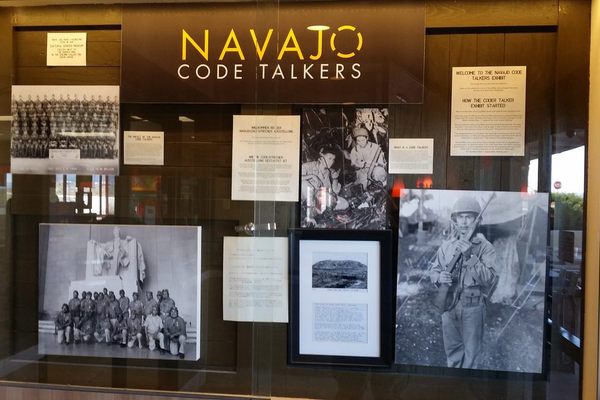





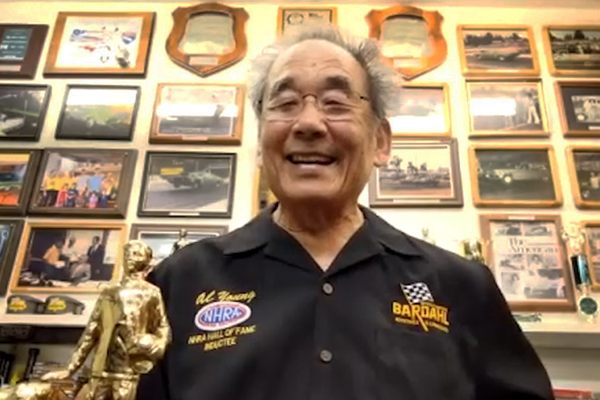



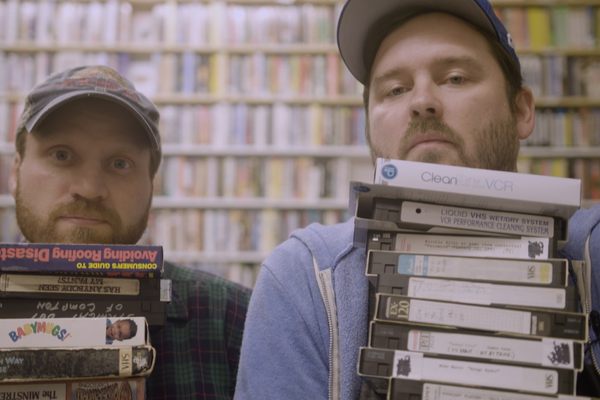


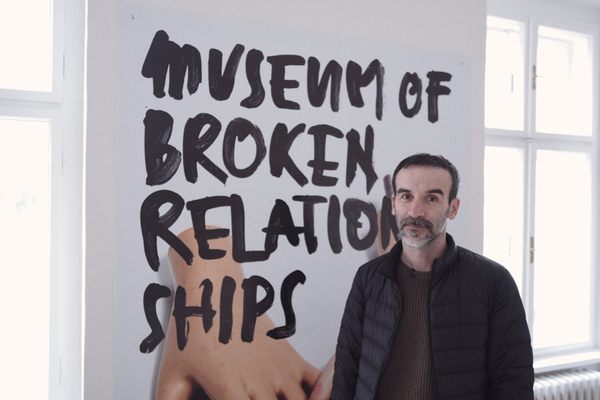


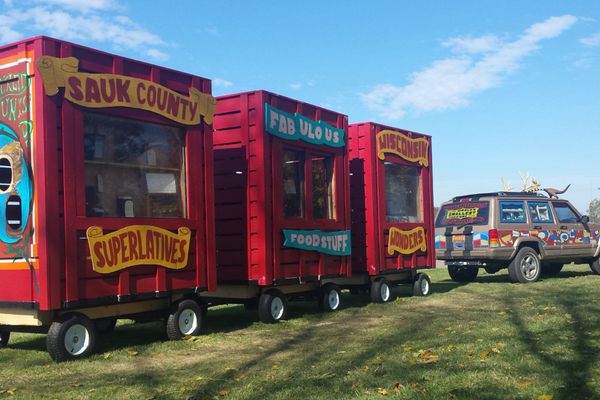








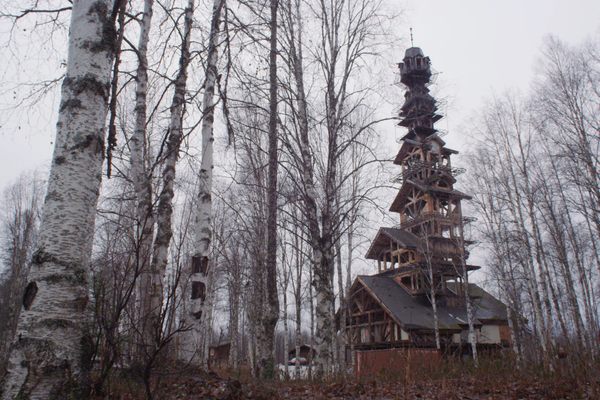


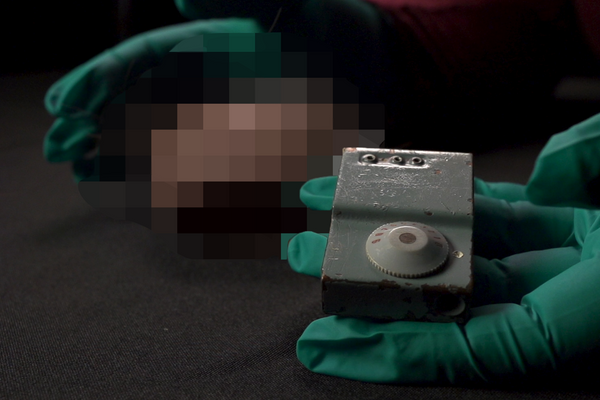








Follow us on Twitter to get the latest on the world's hidden wonders.
Like us on Facebook to get the latest on the world's hidden wonders.
Follow us on Twitter Like us on Facebook